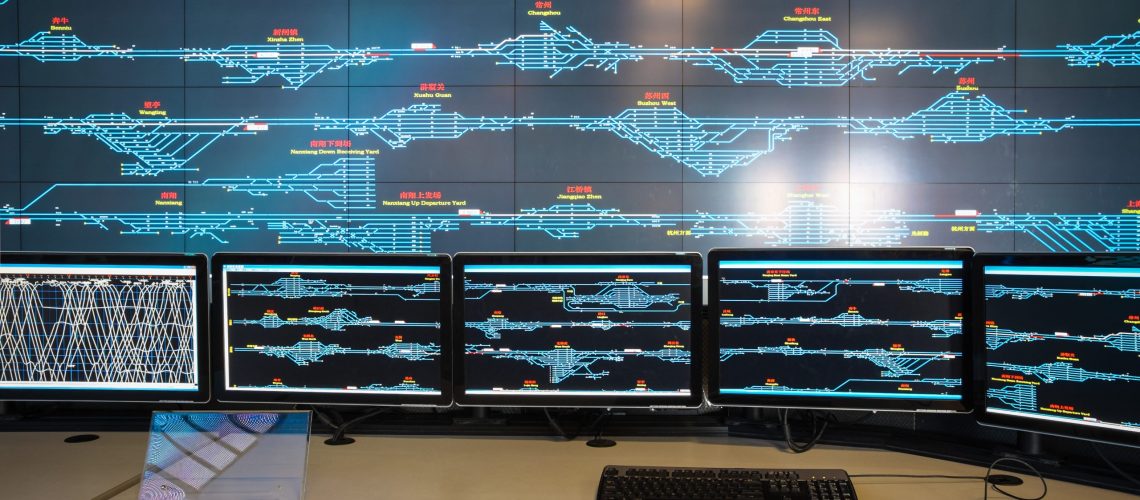Everyone’s attention has been focused on coronavirus for the better part of a year which means city, state and federal governments, and agency emergency operation centers have been double busy, keeping up with the COVID-19 pandemic, other emergencies, natural disasters such as wildfires, floods, earthquakes, and snowstorms, and the impact of protests and civil unrest.
Emergency Operations Centers (EOCs) are the physical or virtual locations where responses to these types of incidents and emergencies are coordinated. And just like every other workplace, EOCs have had to adjust to the restrictions and requirements of the COVID era, while still getting their critical jobs done.
So, what challenges have EOCs faced in the age of coronavirus, and what technology solutions have helped overcome them? Keep reading to find out.
Emergency Response Challenges in the Age of COVID-19
One of the biggest pandemic challenges faced by EOCs is like that of many other essential businesses—how to stay open and operational while keeping employees healthy and safe. Mask wearing and social distancing are effective safety measures, but they can sometimes interfere with clear and quick communication.
Remote work is another tactic many companies and agencies have deployed to keep things running while protecting employees, and it is a more realistic option for EOCs than you might think. According to the federal website Ready.gov, an EOC can be a physical or virtual location where emergency responses and incident management activities are conducted.
Whether an EOC is in a building, a room, or virtual, the heart of the operation is the staff. EOC staff members are usually drawn from state, local, and federal emergency response agencies and their job is to prepare for an upcoming incident or respond to an ongoing one. To do that, they need the right communication and collaboration tools no matter where they are.
Top Technology Solutions for Effective Incident Management
The primary job of an EOC is to serve as a communications hub to make emergency responses faster and better. Effective communication is more important now than ever as EOCs will probably connect responders in a variety of locations. Here are the technology solutions that can help get the job done.
- Video walls are the most common technology element of physical EOCs. Even a two-by-two video wall display can go a long way to help access data visualization and monitor video feeds. High-definition displays are more critical than ever as in-person EOC staff will likely be more spread out in a physical space and not everyone will sit close to a display or monitor. As a hybrid work model becomes more the norm, EOCs should consider video wall solutions that can run on PCs, tablets, and smartphones, so anyone from anywhere can update and view content. Touchless control systems for video walls and other audio visual components can also reduce exposure and risk for in-person EOC staff.
- Software-based video conferencing solutions can keep EOC teams connected even if they are physically separated. A video conferencing system that integrates easily with the other components in your physical space can make the conferencing experience more reliable and productive for in-person EOC staff. And working with a knowledgeable audio visual integrator to identify the video conferencing platform that best meets your needs will help ensure that remote employees have the same quality of experience. Choosing a video conferencing platform with a chat or messaging function (or adding a second collaboration tool with chat capabilities) can also help remote and in-person employees communicate quickly and clearly despite masks and physical distance.
- If AV technology systems go down in an office building it’s annoying but not dangerous. If you lose communication or collaboration capabilities in an EOC, however, the consequences can be dire. Professional maintenance of the AV at your physical location can minimize potential equipment failures and an AV support team can quickly address the issues that arise. AV Solutions’ preventative maintenance program includes system inspection and testing, remote monitoring and maintenance, and in-meeting support so you are never without the help you need when you need it.
Get Prepared with Solutions and Support from AV Solutions
Emergency Operations Centers have particular and critical communication and collaboration needs. The AV Solutions team is committed to understanding your specific objectives and then finding the best technology solutions to meet them. From AV system design and engineering to installation and maintenance to AV training and support, AV Solutions can provide a full spectrum of solutions from the start of your EOC project to the finish. Need some help with your Emergency Operations Center technology needs? Get in touch with AV Solutions today.
